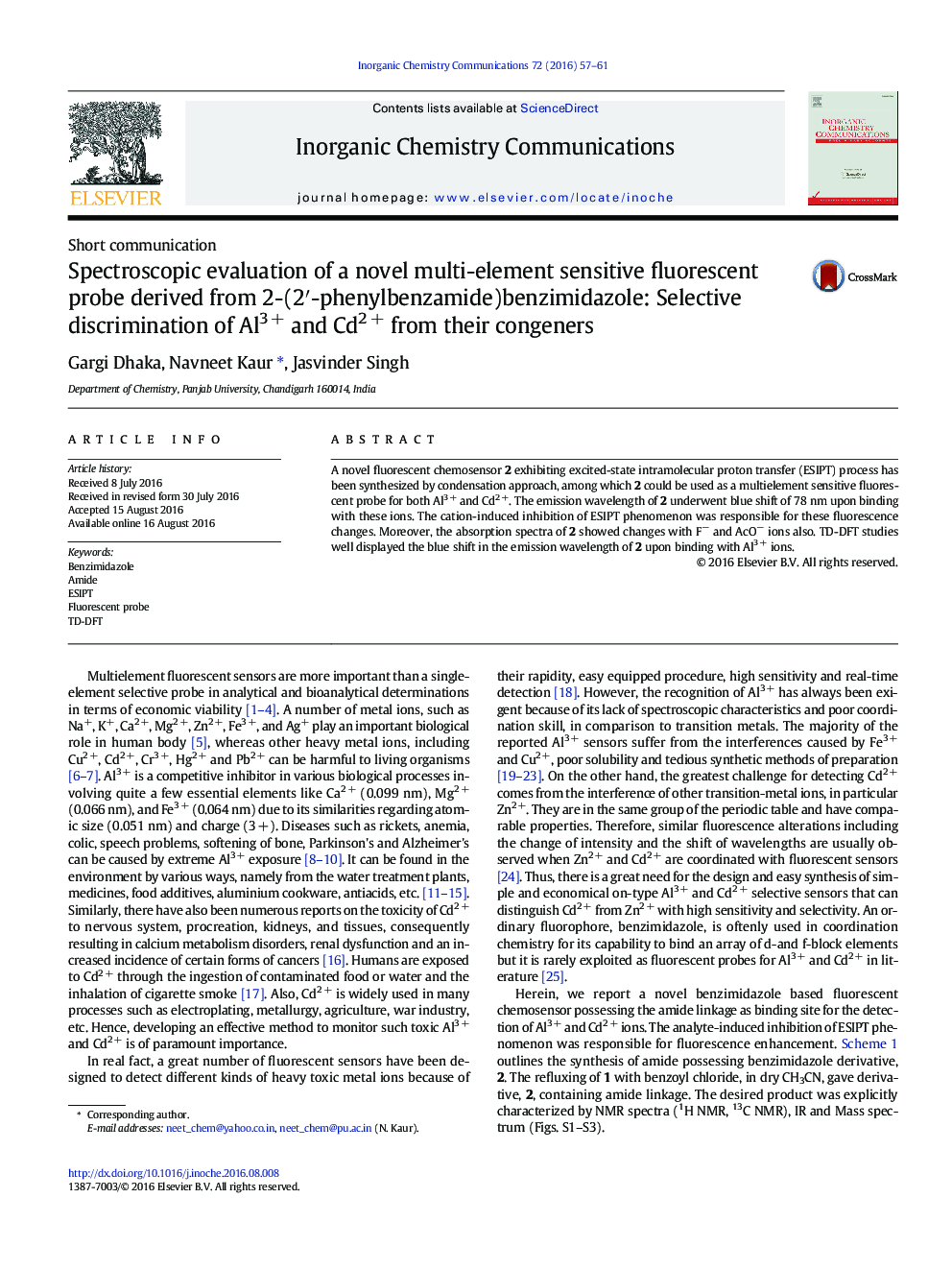| Article ID | Journal | Published Year | Pages | File Type |
|---|---|---|---|---|
| 1301603 | Inorganic Chemistry Communications | 2016 | 5 Pages |
•A novel benzimidazole based chemosensor possessing amide functionality (2)•2 could specifically detect Al3 + and Cd2 + ions.•Cation-induced inhibition of ESIPT phenomenon responsible for fluorescence changes•A binding model was proposed from TD-DFT results.
A novel fluorescent chemosensor 2 exhibiting excited-state intramolecular proton transfer (ESIPT) process has been synthesized by condensation approach, among which 2 could be used as a multielement sensitive fluorescent probe for both Al3 + and Cd2 +. The emission wavelength of 2 underwent blue shift of 78 nm upon binding with these ions. The cation-induced inhibition of ESIPT phenomenon was responsible for these fluorescence changes. Moreover, the absorption spectra of 2 showed changes with F− and AcO− ions also. TD-DFT studies well displayed the blue shift in the emission wavelength of 2 upon binding with Al3 + ions.
Graphical abstractA benzamide benzimidazole conjugate 2 has been synthesized as an effective and specific chemosensor for Al3 + and Cd2 + metal ions in CH3CN solution over other heavy and transition metal ions, especially Zn2 +, with low detection limit. The cation-induced inhibition of ESIPT phenomenon was responsible for these fluorescence changes.Figure optionsDownload full-size imageDownload as PowerPoint slide
